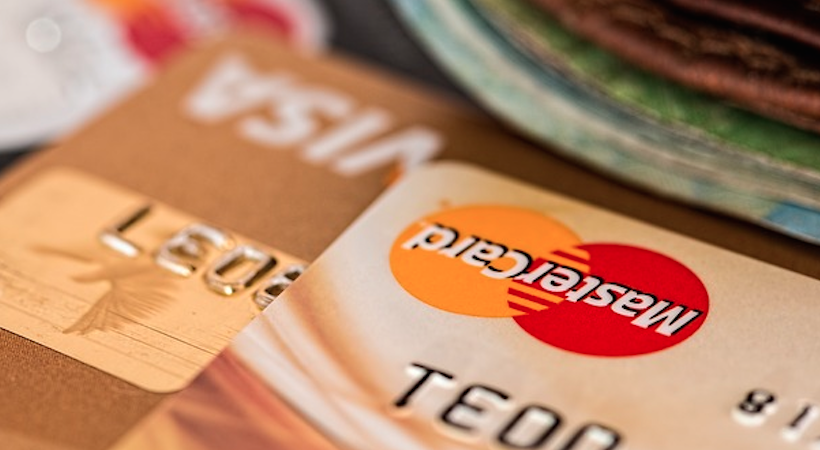Accepting credit cards is important for any business, but protecting your business to avoid credit card fraud is just as important. With credit card fraud on the rise, it is crucial for you to know and understand how you can prevent fraudulent charges occurring at your business.
The Nilson Report estimates that in 2016, credit card fraud losses topped $24.71 billion, which is a 12 percent increase over the previous year, and according to a Barclays report, 47 percent of the world’s credit card fraud happens right here in the United States.
Credit card fraud is damaging to both consumers and businesses alike.
As reported by a Kaspersky Lab survey, small businesses spend $38,000 to recover from a security breach, with additional indirect costs averaging around $8,000. Enterprise businesses pay on average $551,000 to recover with additional indirect costs averaging at $69,000.
As credit card fraud becomes increasingly more relevant, there are ways to protect your business against credit card fraud.
International Bancard put together six easy ways that your business can avoid credit card fraud:
Related: Why Your Business Should Accept EMV Chip Cards
Accept EMV chip cards
EMV is the global standard for chip-based debit and credit card transactions, which fights against fraudulent charges.
Most experts conclude that the reason the United States has a higher amount of fraud than the rest of the world is because we have been slow to adopt EMV (the Fraud Liability Shift didn’t even go into place until October 2015). Countries that have been practicing EMV have had an exponential decrease in counterfeit fraud. For example, the United Kingdom saw a 70 percent decrease in fraud between 2005 and 2013.
By accepting EMV chip cards, you are joining the global fight against fraud, as well as:
- Keeping your business safe
- Protecting your customers’ data
- Avoiding liability
- Creating a consistent cardholder experience worldwide
Keep an eye out for warning signs
When accepting card-present transactions, be on the lookout for warning signs that the card holder may not be who they say they are. There are many indications that your “customer” potentially may be trying to commit fraud:
- Pulling a credit card out of a pocket rather than a wallet or purse
- Purchasing an unusual number of expensive items
- Purchasing an unusual variety of items, such as clothing of several different sizes or items with a wide variety of value
- Trying to rush you near closing time
- Telling you not to bother inserting their chip card or swiping their magnetic stripe card. For example: claiming the card is damaged or some such reason
- Handing you their mobile phone claiming their bank is on the other end and will provide an approval code.
Of course, if someone performs any of these actions, they may not be trying to commit fraud. Remember to use common sense and trust your instincts!
If you experience one or more of these, you may want to consider reporting a potential fraudulent transaction.
Safely accept online payments
While accepting EMV payments reduces in-person credit card fraud, it doesn’t help fight online fraud. In fact, card-not-present transactions account for 45 percent of all fraudulent card usage.
Your business needs to take extra precaution against fraud when accepting online payments. Even though you do not see the cardholder, there are also a number of warning signs that a fraudulent charge is taking place:
- Orders that include several of the same items, especially when it would be unusual to purchase multiples
- Orders made up of “big-ticket” items that have high resale value
- “Rush” or “overnight” orders
- Orders that fail AVS (Address Verification Service) or CID (the three-digit value on the back of the card)
- An international order from a country that your business doesn’t market to for a product the cardholder should be able to purchase at home
- Multiple purchases on the same day
- Multiple purchases from the same IP address
- Orders shipped to a single address but made on multiple cards
- Multiple transactions on one card or similar cards with a single billing address but multiple shipping address
- Multiple failed attempts to purchase prior to a passing authorization
Just because you don’t see the cardholder doesn’t mean you can’t suspect fraud. It is extremely important to be on the lookout for online fraud, not just in-person fraud!
Create a procedure for your business to protect against fraud
An easy way to manage credit card fraud is to make a procedure for your employees to follow when they accept card payments. By creating a procedure, you are making a habit of fighting credit card fraud.
- Check your customer’s ID with every credit card purchase. When asking for your customer’s identification, remember that you must be in accordance with the following rule:
A merchant may request cardholder identification in a face-to-face environment. If the name on the identification does not match the name on the card, the merchant may decide whether to accept the card. If the cardholder does not have or is unwilling to present cardholder identification, the merchant must honor the card. - Check the credit card. Make sure there isn’t obvious tampering or damage to the credit card. This may indicate a stolen credit card.
- Use Address Verification Service (or AVS) to confirm the cardholder’s billing address with the card issuer. If for any reason the billing address fails or does not match up with what the card issuer has on file, you can choose to decline the card.
- Look at the receipt and review it against the card. You may see some differences that throw up a red flag. Compare the cardholder’s name, last four digits of the account number, and signature on the card to those on the transaction receipt.
Report fraud as it happens
No matter the precautions you take, there is still a chance your business can become a victim of credit card fraud. If you or your employees suspect you are victims of credit card fraud, there are ways you can act immediately.
If you suspect fraud is happening in-person:
- Call the card issuer’s authorization center and tell the operator you have a “code 10 authorization request”
- Remain calm and avoid alarming the person presenting the card. Your priority is to keep your employees safe and out of harm’s way
- Keep the card in question in your possession to address any questions
- Answer the operator’s questions in a normal tone. Simply say “yes” or “no” and follow the instructions provided to you
- For the safety of both you and your staff, do not, under any circumstances, confront or try to apprehend the customer
- If necessary, the operator will notify the police while you or your employee waits on the line
If you discover a fraudulent transaction occurs, contact the following resources to assist you:
- Your credit card processor, like International Bancard
- Your bank
- The local authorities
- Legal counsel
It is important to move as quickly as possible if you suspect fraud.
Related: Sign up to receive the StartupNation newsletter!
Continue to educate yourself on credit card fraud
The landscape of credit card fraud is ever-changing. Criminals are becoming smarter and using different and technologically-advanced tools to commit fraud. What is a good practice today may not be relevant in a year. As a small business owner, the smartest and most simple thing you can do is to continue to educate yourself on credit card fraud and how to protect your business.






